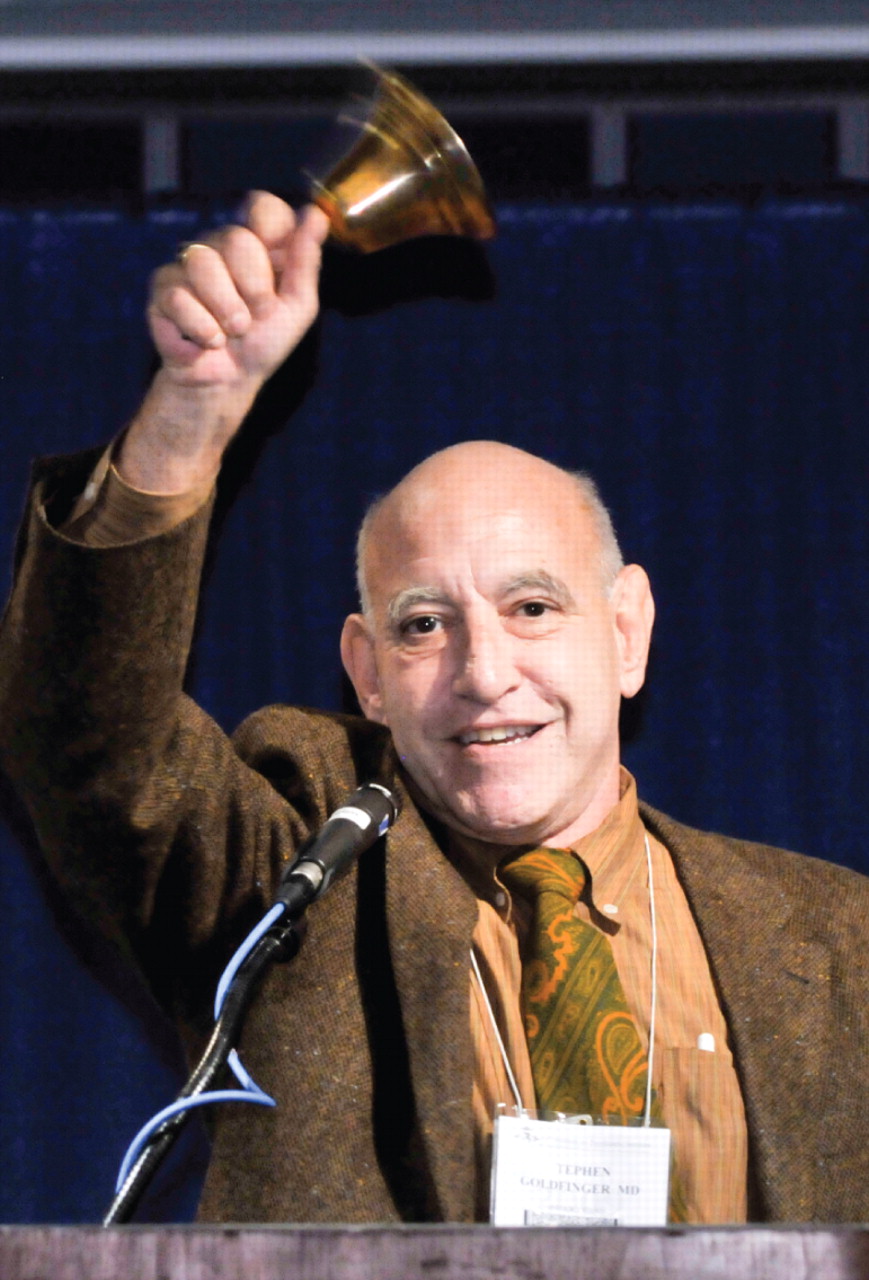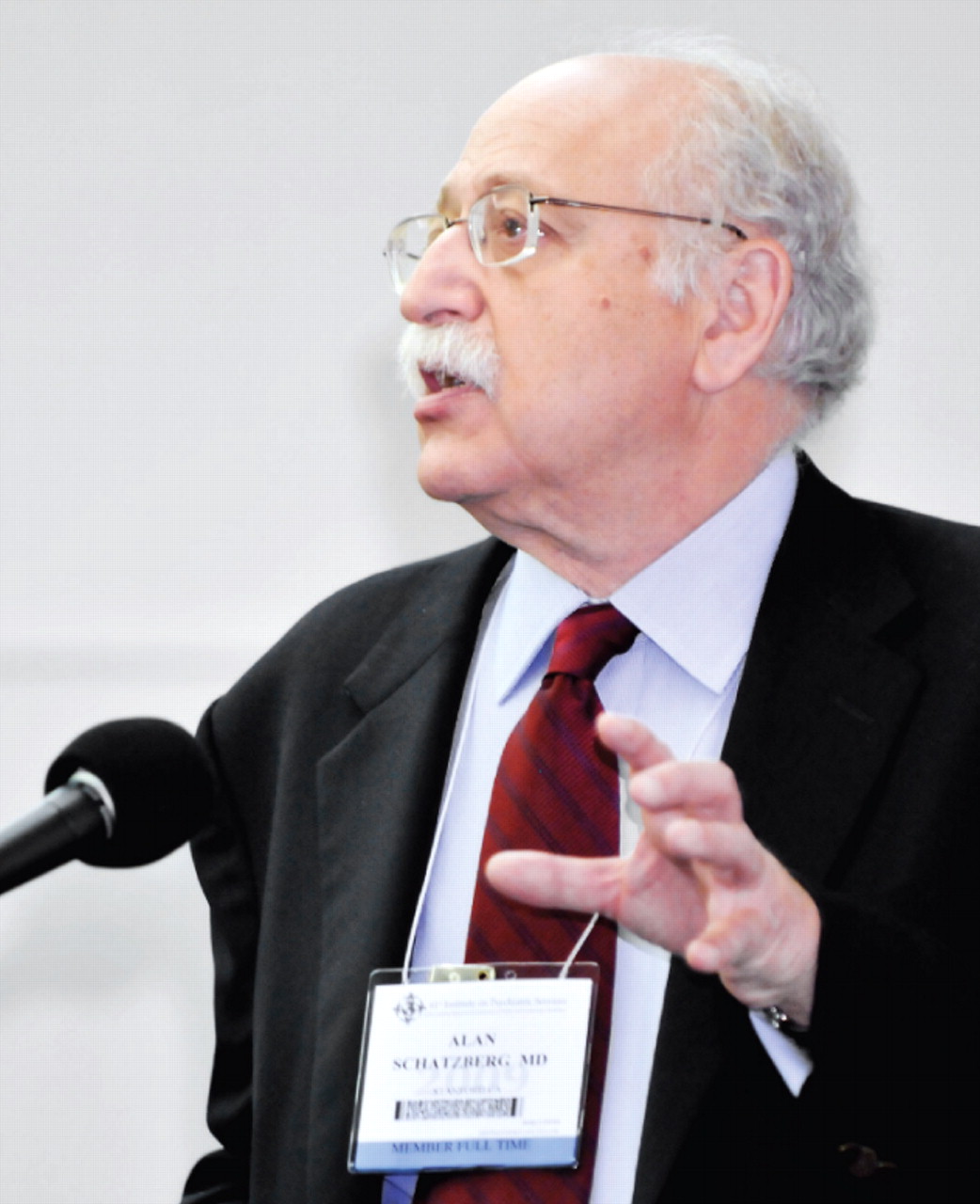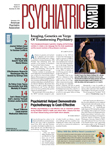Advances in genetics and technology to diagnose and treat depression will inevitably lead to changes in psychiatric training and practice, APA President Alan Schatzberg, M.D., told attendees at the Institute on Psychiatric Services in New York in October.
“Psychiatry must learn a new language,” said Schatzberg. “This is not the language I was taught 40 years ago.”
Genetics continues its prominent role in the exploration of treatments for depression, as well as for a host of other medical illnesses. Pharmacogenetics is a developing field, but it is not ready to be applied for routine screening, said Schatzberg, a professor and chair of psychiatry at Stanford University School of Medicine. Researchers have hoped to be able to predict responses to medications, he said. “In fact, side effects seem to be better predicted than positive response for specific agents.”
He noted people with certain alleles of the 5HTT serotonin transporter polymorphism or the 5HT-2A receptor have had positive or negative responses to SSRIs as well as high dropout rates in some antidepressant treatment trials, often indicating intolerance to the drugs. Capturing that kind of information in future trials will require collecting DNA at baseline to avoid losing genetic data on people who drop out.
Eventually, it may be possible for a clinician to order a quick test of perhaps 50 alleles and then use an algorithm to determine the proper drug and dose for individual patients. Clinicians will have to greatly increase their knowledge about genes and the biological processes they control so as to anticipate a new schema for diagnosis as well as to assess genes' effects on drug response, he said.
Alternatively, it may be possible to insert a virus into a gene promoter region and use a fiber-optic laser with a different colored light to turn the gene on and off.
“It's not just genetics,” he added. “We'll have to put genetics into the context of neuroanatomy.”
Many areas of the brain are involved in mood regulation—the prefrontal cortex, orbitofrontal cortex, anterior cingulate cortex, amygdala, and the hippocampus. Already, genotyping can reveal patterns of response on facial-emotion tests, he said. “When you put individuals with the S/S alleles for the 5HTT promoter in an MRI machine and show them faces with various expressions, he or she appears more emotional.”
The brain's anatomy is central to new technologies such as vagal nerve stimulation, transcranial magnetic stimulation, and deep brain stimulation.
Vagal nerve stimulation was originally developed to treat refractory epilepsy. Early clinical trials resulted in about a 15 percent response, not much better than the 10 percent registered for placebo. The FDA had rejected its use for the treatment of depression until follow-up studies indicated a 30 percent response rate by one-year follow-up. Vagal nerve stimulation remains controversial, however.
“The FDA has approved it, but Medicare won't pay for it,” said Schatzberg. “We'll need large-scale trials to know its efficacy.”
Transcranial magnetic stimulation (TMS), developed originally for chronic pain, is applied for 40 minutes a day, five days a week, for six weeks. The effect penetrates about one inch into the brain. It has produced response rates of 20 percent to 25 percent, better than placebo (10 percent). It has been approved for use by the FDA for patients with mild-to-moderate refractory depression but is not yet covered by Medicare.
Deep brain stimulation (DBS) uses an implantable device to trigger response in specific brain areas. Studies using a small number of patients have shown response rates of 40 percent to 60 percent, but many questions remain. It is not yet approved by the FDA and not covered by Medicare for psychiatric conditions.
DBS has abeen tested in different areas of the brain. The key to success with all these technologies may be more accurate brain mapping plus a better understanding not just of the regions but also of the circuitry that connects them, said Schatzberg. That understanding might not only improve treatment but also make the technology more efficient, he said.
“Right now, the problem is that the battery eventually dies, and the patient needs a second surgery to recharge it,” he said. “But a more accurate signal point would demand less power and lead to longer battery life.”
The hypothalamic-pituitary-adrenal (HPA) axis is another target of current investigation. Corticotropin-releasing hormone antagonists have been tested in double-blind studies with little success to date.
Tests of mifepristone (RU486)—a glucocorticoid receptor antagonist in the brain—have been well tolerated by subjects. There are both positive and failed trials in psychotic major depression and a recent positive trial in bipolar depression. The drug may work by “resetting” the HPA axis, a strategy that, if proven successful, may eventually have wider applications. It is given for one week, but the effects last eight weeks or longer, suggesting that a “pulsing” approach for some treatments may become the norm.
Much of this new science will affect existing approaches to treatment as well.
“Once we understand the biology of these illnesses, we'll be able to predict the responses to psychotherapy based on genetics,” he said. “There is a science to psychotherapy. To think that biological psychiatry would do away with psychosocial treatment is naïve. We'll do it in a more informed way.”
To keep up with these and other developments, psychiatry training will have to include more about imaging, genetics, and electrical stimulation, along with better integration of stress physiology and brain circuitry, said Schatzberg. However, psychiatry should not be combined with neurology into a single clinical neuroscience discipline, as some have suggested.
“Neurologists are less interested in affect and behavior, which is what drives psychiatry,” he said. “We will always need a discipline based on behavior and affect; however, we will be stronger and better when we incorporate these new ideas and techniques.”
Schatzberg has been a consultant to Neuronetics, manufacturer of an r-TMS device; a cofounder of Corcept Therapeutics, which is developing mifepristone for psychotic depression; and a named inventor on Stanford's use patents on mifepristone and genetic markers for antidepressant drug response.



